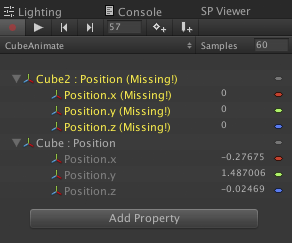The Future of Painting in the Age of AI: A Look Ahead to 2030
The Future of Painting in the Age of AI: A Look Ahead to 2030
Over the next five to six years, artificial intelligence (AI) is set to revolutionize how painters create, share, and monetize their work. While some fear that AI might replace traditional artists, history and emerging trends show that it is far more likely to enhance a painter's life, expanding creative horizons and improving day-to-day workflows. Here's a detailed look at how painters can embrace AI to thrive in the next decade.
1. AI as a Creative Assistant
AI-powered tools like DALL-E, Midjourney, and Adobe Firefly allow artists to generate rough compositions, experiment with styles, and ideate faster than ever. A painter can input a prompt such as "sunset over a rural Telugu village in Van Gogh's style," and receive multiple visual inspirations instantly.
Use Case: An artist struggling with creative block can generate AI sketches to break out of a rut, then use traditional media to refine the piece.
Historical Context: Similar to how the camera initially disrupted then inspired the Impressionists in the 19th century, AI is now pushing painters to rethink what "originality" means.
"New tools always disrupt, but also democratize. The camera didn't kill painting; it made it more expressive." — John Berger, Ways of Seeing
2. Bridging Traditional and Digital Art
AI bridges traditional painting with new-age mediums like AR, VR, and generative art. Tools like Runway ML and NVIDIA Canvas enable real-time transformation of brush strokes into photorealistic or fantastical worlds.
Use Case: A painter can create interactive murals that come alive when viewed through an AR app—perfect for galleries, schools, or public spaces.
Example: Refik Anadol uses AI and machine learning to convert large datasets into immersive installations. While he comes from a digital art background, traditional painters are beginning to adopt similar techniques for mixed media shows.
3. Personalized Marketing & Audience Engagement
AI helps automate marketing tasks that used to consume hours:
-
Writing social media captions
-
Editing videos for reels
-
Finding optimal posting times
-
Identifying collector interests based on previous sales data
Use Case: A painter can schedule a month's worth of content using tools like Jasper.ai or Lately.ai, freeing time for studio work.
Stat: According to HubSpot (2023), AI-generated content increased artist engagement by 30% on average.
4. Intelligent Pricing and Business Strategy
Painters often struggle with pricing their work. AI tools like ArtPrice or Magnus app analyze trends, artist reputations, and market conditions to suggest realistic pricing.
Use Case: An emerging artist can confidently price their work for online galleries or exhibitions, backed by data.
Example: Saatchi Art incorporates AI recommendations for pricing and showcasing art to buyers based on viewing behavior.
5. Daily Life Enhancements through AI
-
Routine Automation: Tools like Notion AI or Google Bard can handle admin tasks—writing bios, organizing to-do lists, or managing exhibition schedules.
-
Health Monitoring: AI apps can analyze posture, eye strain, and provide reminders to take breaks.
-
Voice-to-Canvas Tools: Emerging tech like GANPaint Studio may soon allow artists to paint via voice instructions.
Use Case: A visually impaired artist can describe a scene, and an AI co-painter brings it to life on screen for further enhancement.
6. A New Role: The AI-Aware Painter
In the coming years, some painters may evolve into AI directors—curating prompts, tweaking algorithms, and blending human spontaneity with machine precision.
Use Case: A painter collaborates with an AI model to produce limited-edition digital prints, each unique yet stylistically consistent.
Example: Mario Klingemann, a pioneer in AI-generated art, showcases how traditional aesthetics can blend with machine learning to create thought-provoking art.
Conclusion: Painting a Future with AI
Painters need not fear AI—they should embrace it as the next big brush in their toolkit. From ideation and marketing to new media exploration, AI empowers painters to do more with less. By 2030, the most successful artists will likely be those who view AI not as a rival, but as a collaborator.
Bibliography:
-
Berger, John. Ways of Seeing. Penguin Books, 1972.
-
HubSpot. "State of Marketing 2023." https://blog.hubspot.com
-
Runway ML. https://runwayml.com
-
Adobe Firefly. https://firefly.adobe.com
-
Refik Anadol Studio. https://refikanadol.com
-
Jasper AI. https://www.jasper.ai
-
Magnus App. https://magnus.net
-
Saatchi Art. https://www.saatchiart.com
-
Mario Klingemann. https://quasimondo.com
-
NVIDIA Canvas. https://www.nvidia.com/en-us/studio/canvas/



Comments
Post a Comment